The treasure troves of gold, silver, and intricately designed jewelry… are rare treasures discovered in 2023.
Treasure Discoveries Around the World in 2023
- 1. A Huge Coin Collection in Japan
- 2. The Underwater Temple in Egypt
- 3. The “Lost” Rainbow Cup in Germany
- 4. Civil War Coins Buried in a Cornfield in Kentucky
- 5. A Gold Ring in a Bronze Age Tomb in Wales
- 6. Bronze Age Swords and Thousands of Medieval Coins in Germany
- 7. A Glass Workshop from the Iron Age Full of Celtic Coins
- 8. A Gold Chain Revealed After a Landslide in Spain
- 9. A Hoard of Coins Unearthed at an Ancient Buddhist Temple in Pakistan
- 10. Coins Hidden in a Clay Pot in Poland
1. A Huge Coin Collection in Japan
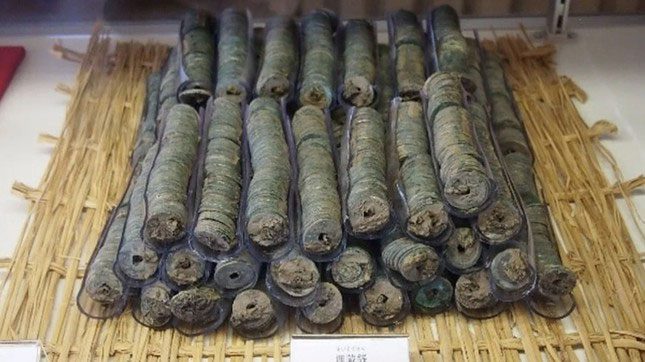
If you look closely, you can see square holes between the coins where a string could be used to keep them together. (Image source: Maebashi City Archives)
During a construction project for a factory in northern Tokyo, workers unearthed approximately 100,000 coins buried at the site. The coin collection was divided into 1,060 bundles and dates from 175 BC to 1265 AD, featuring the Chinese inscription “Banliang,” meaning “half a tael.”
2. The Underwater Temple in Egypt
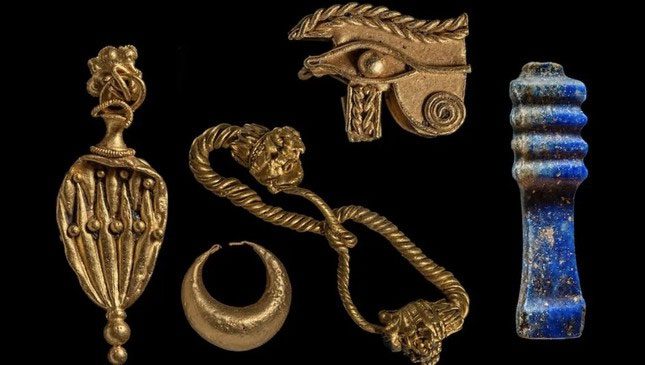
The treasure collection found inside a sunken temple in Egypt (Photo: European Institute of Underwater Archaeology (IEASM)).
Underwater archaeologists exploring a canal off the Mediterranean coast of Egypt discovered treasure beneath a collapsed underwater temple.
This secret treasure includes silver ritual tools, gold jewelry, and alabaster containers.
3. The “Lost” Rainbow Cup in Germany
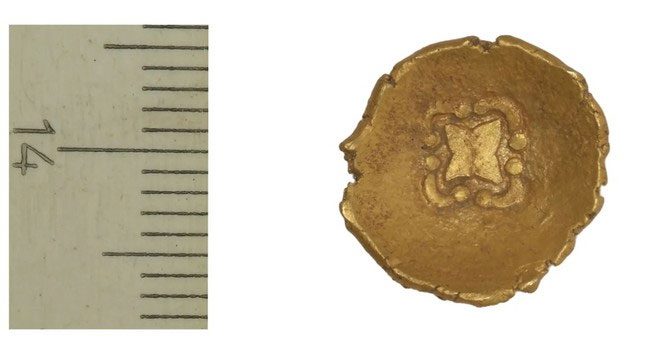
The four-pointed star pattern surrounded by four rare arches. Only three Celtic rainbow cups are known with this design.
A 2,000-year-old rainbow cup made by the Celts was found along a river in Germany. The gold coin shaped like a cup features a rare design element: a four-pointed star surrounded by arches.
This discovery is one of only three known rainbow cups with this motif. The rainbow cup is named based on the Celtic legend that they are golden drops falling from the end of the rainbow to Earth.
4. Civil War Coins Buried in a Cornfield in Kentucky
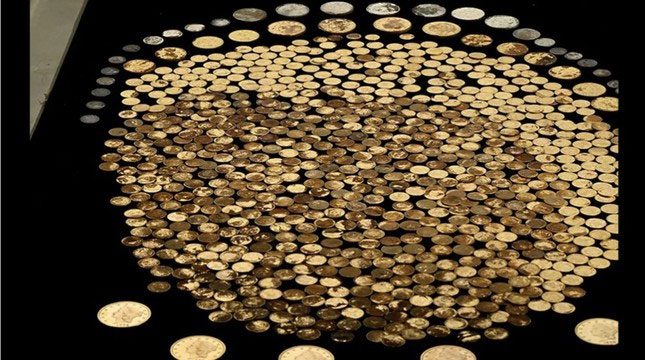
About 95% of the hoard consists of gold dollars dating from the Civil War.
A man working in a cornfield in Kentucky discovered a treasure of 700 Civil War coins. This gold hoard is known as the “Great Kentucky Hoard,” containing hundreds of gold coins minted from 1840 to 1863, along with a few silver coins.
Researchers believe this collection was buried before a Southern raid in the summer of 1863.
5. A Gold Ring in a Bronze Age Tomb in Wales
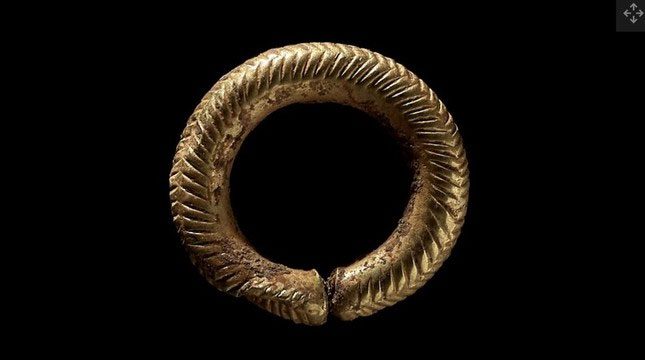
The small gold ring features an intricate pattern of V shapes and fish bones (Image credit: © Amgueddfa Cymru – Museum Wales)
A sparkling gold ring was discovered as part of a Bronze Age burial artifact along a road in Wales.
Researchers concluded that the artifact was buried alongside the cremated remains of a 3,000-year-old individual who may have held a high status in society.
6. Bronze Age Swords and Thousands of Medieval Coins in Germany
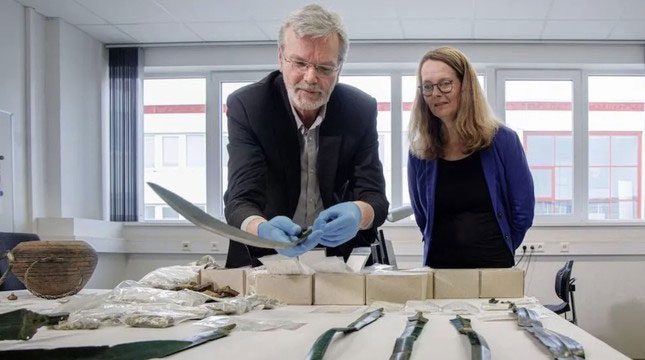
Archaeologists Detlef Jantzen (left) and Bettina Martin, Minister of Science and Culture, examine the latest archaeological finds from Germany, including Bronze Age swords and thousands of coins. (Image: Markus Scholz/dpa via Alamy Live News)
A team of conservators discovered about 8,000 medieval coins and seven Bronze Age swords while working at three different sites in Germany. Archaeologists believe these 3,000-year-old weapons may have been placed there as part of a sacrificial ritual and are part of the largest hoard of Slav coins from the 11th century.
7. A Glass Workshop from the Iron Age Full of Celtic Coins

Some glass bracelets and beads were found in Němčice, Czech Republic. (Image credit: Ivan Čižmář, et al; Antiquity Publications Ltd).
In the Czech Republic, archaeologists uncovered the oldest known glass workshop north of the Alps and believe it may have been used for a ritual.
This 2,300-year-old workshop contained several complete glass and amber items, including beads and bracelets, as well as 2,000 gold and silver coins made by the Celts. They also found a square structure similar to other ancient buildings across Europe that were used for rituals.
8. A Gold Chain Revealed After a Landslide in Spain

This recent discovery resembles this gold bracelet, known as a torc. Such rigid necklaces or bracelets were crafted by the Celts in Spain (Photo: Andres Victorero via Getty Images).
A landslide in northern Spain revealed two “lavishly decorated” gold necklaces buried about 2,500 years ago. The first C-shaped necklace, known as a torc, was discovered by a utility worker, while the second was unearthed by a metal detector.
Based on the style and techniques used to create the jewelry, archaeologists concluded that the necklaces were crafted around 500 BC during the Iron Age in Iberia and may have been worn by members of the upper class.
9. A Hoard of Coins Unearthed at an Ancient Buddhist Temple in Pakistan
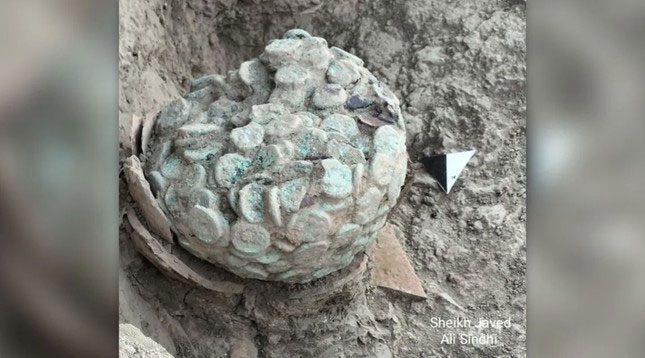
The copper hoard had fused together after centuries of corrosion into a mass weighing about 12 pounds (5.5 kg). (Photo: Sheikh Javed Ali Sindhi).
Archaeologists in Pakistan discovered a collection of 2,000-year-old coins within the ruins of an ancient Buddhist temple known as a stupa from the pre-Christian era to the third century AD. Corrosion had caused the coins to fuse into a greenish mass weighing about 12 pounds (5.5 kg).
10. Coins Hidden in a Clay Pot in Poland
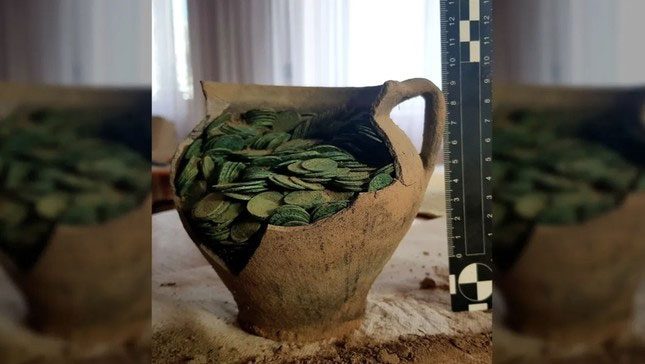
Archaeologists believe that the clay pot containing countless coins was intentionally buried on a farm in eastern Poland in the late 17th century. (Photo: Paweł Ziemuk/WKZ Lublin).
A metal detector expert discovered a hoard of 1,000 coins buried beneath the surface in Warsaw, Poland, dating back to the 17th century. However, these coins were not very valuable, and the entire hoard was only enough to purchase “about two pairs of shoes” at that time, experts noted.


















































